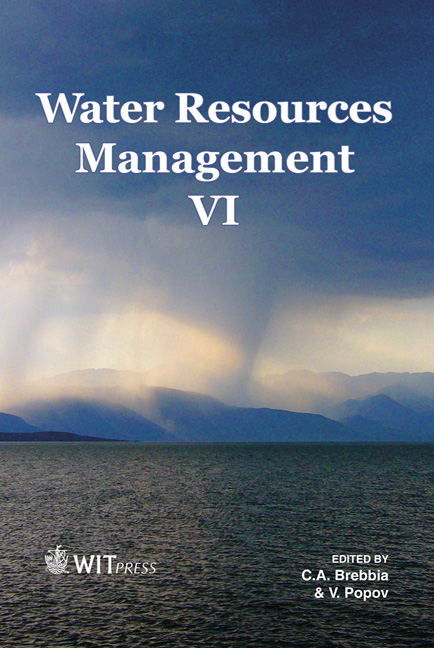Water Defluoridation With 150–300oC Calcined Bauxite-Gypsum-Magnesite (B-G-Mc) Filters
Price
Free (open access)
Transaction
Volume
145
Pages
11
Page Range
383 - 393
Published
2011
Size
427 kb
Paper DOI
10.2495/WRM110331
Copyright
WIT Press
Author(s)
B. Thole, F. W. Mtalo & W. R. L. Masamba
Abstract
Research on water defluoridation with composite filters of bauxite, gypsum and magnesite was carried out at Ngurdoto Research Station to determine capacity, nature of fluoride-sorbent interaction and changes in water quality. The objective was to identify an optimum composite filter that would not alter the water quality beyond World Health Organisation recommendations. The three materials were characterized through X-Ray Fluorescence. The major components were Al2O3 (30.33%) for bauxite, CaO (28.09%) for gypsum and MgO (34.57%) for magnesite. The materials were calcined at temperatures of 150, 200, 250 and 300oC. Six composite filters were prepared for each calcine temperature of bauxite:gypsum:magnesite in the ratios 1:2:3, 1:3:2, 2:1:3, 2:3:1, 3:1:2 and 3:2:1. The highest capacity, 11.77 mg F/g, was obtained with the 3:1:2–200oC calcine. The optimum filter was however the 1:2:3–200oC calcine with capacity of 10.19 mg F/g. This filter did not alter the water quality beyond the considered WHO limits. The fluoride-sorbent interaction could best be described by Langmuir isotherm for the 200 and 300oC, and Temkin isotherm for the 150 and 250oC composites. Most composites changed water quality beyond WHO standards in Al3+, Fe2+, and 2 4 SO , however a composite filter of these materials is plausible. Keywords: defluoridation, bauxite, gypsum, magnesite, composite filter, calcine, Langmuir, Temkin, Freundlich. 1 Introduction One water quality parameter impacting on human health in a number of countries within Sub-Saharan Africa, such as Malawi, Tanzania and Kenya, is
Keywords
defluoridation, bauxite, gypsum, magnesite, composite filter, calcine, Langmuir, Temkin, Freundlich





